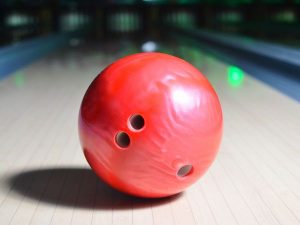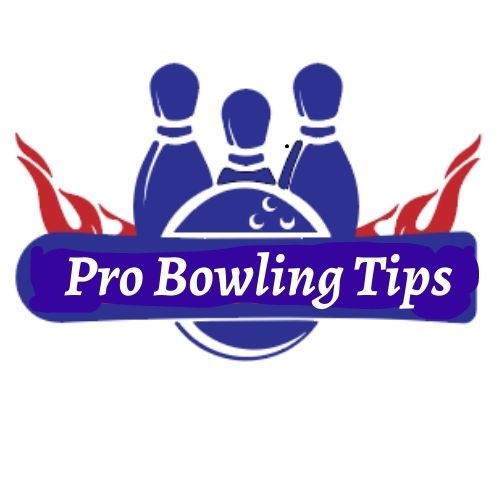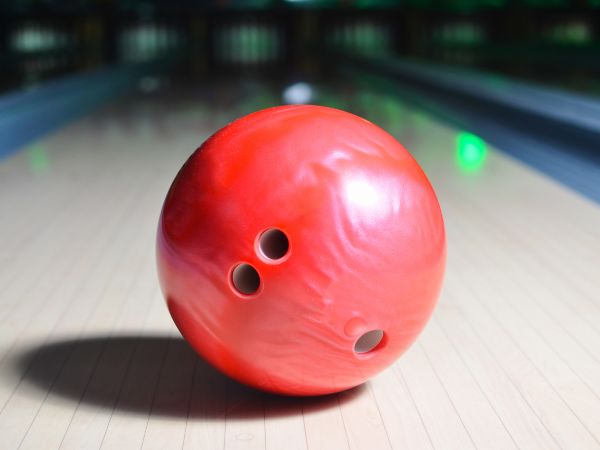Bowling Ball With Holes Or Without Holes? Did you ever buy a new bowling ball? If you did, then you must know that they come undrilled. You need to get it drilled as per your chosen layout. The drilling creates some holes in the bowling ball. One is for the thumb and the other two are for the two fingers. Some bowlers don’t drill their bowling balls because they are two-handed bowlers.
Some just skip drilling the thumb hole. They don’t simply need the holes to grip their bowling balls. So how do you throw your bowling ball? What do you prefer? Bowling ball with holes or without holes? Let me break it down for you in detail.

Bowling Ball With Holes
A bowling ball with holes is the traditional style used in the sport of bowling. Here are some key aspects and considerations for this type of bowling ball:
- Traditional Grip: This style is the traditional approach, where your fingers and thumb are inserted into the drilled holes. It’s the most common style used by both casual and professional bowlers.
- Control and Stability: The holes provide a secure grip, offering more control over the ball’s roll and direction. It allows for a consistent release and is generally considered easier for beginners.
- Custom Fit: Bowling balls with holes are typically custom-drilled to fit an individual’s hand, providing comfort and reducing the risk of injury.
- One-Handed Bowling: This style is predominantly for bowlers who use a one-handed technique. The holes help create a smooth, consistent bowling motion.
Design and Usage
- Holes Configuration: Typically, a standard bowling ball has three drilled holes: one for the thumb, and two for the middle and ring fingers. This design allows bowlers to grip and release the ball effectively during their throws.
- Custom Drilling: Bowling balls can be custom-drilled to fit an individual’s hand size and grip style. This personalized fit is crucial for comfort, control, and to prevent injury.
- Material and Weight: Bowling balls with holes are made from various materials like polyester, urethane, reactive resin, and proactive (particle). They come in different weights, usually ranging from 6 to 16 pounds, allowing bowlers to choose based on their strength and bowling style.
Advantages
- Control and Precision: The grip provided by the holes allows for greater control over the ball’s motion, including speed, spin, and direction. This precision is vital for consistent scoring.
- Suitable for All Skill Levels: This traditional style is suitable for bowlers of all skill levels, from beginners to professionals.
- Customization: Beyond just the fit of the holes, other aspects of the ball like weight, balance, and surface texture can also be customized to suit a bowler’s technique and the lane conditions.
Considerations
- Grip Technique: The way you grip the ball can significantly affect your throw. It’s important to learn the correct technique to avoid strain or injury.
- Maintenance: Regular maintenance, like cleaning the holes and the surface of the ball, is essential to preserve its condition and performance.
- Regulations: In competitive bowling, there are specific regulations regarding the size, number, and placement of the holes in a bowling ball. It’s important to ensure any customizations adhere to these rules.
Bowling balls with holes remain the standard in the sport, offering a blend of tradition, control, and customization. Whether you’re a casual player or a competitive bowler, finding the right ball with the right fit can significantly enhance your game.
can you use a bowling ball without holes?
- Two-Handed Bowling: Commonly used by two-handed bowlers, these balls don’t have traditional finger holes. Instead, the bowler places their fingers on the surface of the ball.
- Increased Power and Rev Rate: The two-handed technique, often used with balls without holes, allows for greater revs and speed, potentially leading to a more aggressive hook.
- Skill and Practice: This style generally requires more skill and practice to master. It’s favored by some professional bowlers for the dynamic play it allows.
- Regulation Compliance: When using a ball without holes in competition, ensure it complies with the rules and regulations of the league or tournament.
Holes are not necessary for Bowling balls. Whether you will use your bowling ball holes or not is entirely up to every bowler’s personal choice. You don’t need to always use a Bowling ball with holes. Disabled (amputated or deformed) bowlers or two-handed bowlers who don’t use any bowling ball holes don’t need to use the thumb or finger holes of a ball during the ball release. The bowlers who use granny bowl style, also don’t use holes.
We all know how bowling ball rolls down the lane when they are released. Typically, bowlers use finger and thumb holes for gripping purposes. So, they are called gripping holes as well. Gripping holes are widely appreciated for establishing the greatest degree of control over the ball during the approach and release. Bowlers who use gripping holes use this as a key determinant of whether they will be able to effectively control, hold, and successfully release the bowling ball.
Having gripping holes for the fingers allows you to impart lift, rotation, and roll on a ball. This makes the ball curve on the lane for a better hook. These gripping holes are also beneficial for elevating pinfall which is done by overcoming the deflection of a heavy bowling ball by a pin.
Are you a left-handed bowler or a right-handed bowler? If you are any of these two, it means you play with one of your hands. You cannot grip a ball without any holes in it using only one of your hands, can you? That’s when the holes come in handy. Typically, a bowling ball has three holes. One is for the thumb and the rest two are for the ring finger and the middle finger for gripping purposes. Some bowlers use two, four, or even five holes in their ball.
Then comes the bowlers who use no gripping holes at all. So how do they play? Of course, not with one hand. They use both of their hands. However, some two-handed bowlers often get one or two holes drilled for better balance and grip.
I’d suggest using a ball with no hole if you don’t have the use of it. If you throw your bowling ball without using any hole, its track will roll over the large thumb hole, which can make the ball jump up off the lane and cause extremely unpredictable motion. And so, as a two-handed player, there’s no need for you to drill a thumb hole. What you can do is drill your finger holes right in the middle of the CG. This will make the ball perform just fine.
So to answer your question— No! You don’t necessarily need the bowling ball holes unless you don’t have the use of them. However, if you’re someone who has benefited from ball holes and could get a controlled and smooth ball motion, then you know the drill (pun intended, haha!).
What do professional bowlers prefer: Bowling Ball With Holes or Without Holes?
A professional bowler can be one-handed or two-handed, or just someone who doesn’t use the thumb hole. But the majority of the single-handed pro bowlers prefer bowling balls with holes. This gives them the extra grip they need to properly control their bowling ball motion on the lane. With just the right amount of hold and on-time ball release, pro bowlers truly benefit from the bowling ball holes.
The drilled holes have their fair share of benefits. That is unavoidable for every single-handed bowler. To know what you prefer personally, you need to try bowling in both methods. In 2014, the USBC (United States Bowling Congress) made some changes regarding the specifications of bowling ball gripping holes.
The rule says that if a gripping hole is not used for gripping purposes, it will be considered a balance hole. Let me tell you what USBC Interim Executive Director Chad Murphy has said.
“A no-thumb bowler using a balance hole along with an unused thumb hole could effectively create two balance holes and change ball dynamics through layout choices in ways that are not available to a bowler who does use their thumb. This rule change aims to create greater fairness by removing the potential advantage of two balance holes. If the bowler does not use the thumb hole for gripping, it’s not a gripping hole.”
This modified rule clarifies the right use of the thumb hole. This rule affects the bowlers who use drilled bowling balls. I think it has reduced confusion among many bowlers who worry about their bowling balls. I think what USBC did is completely meaningful As long as your bowling ball is within USBC’s static balance requirements. No-thumb professional bowlers are strictly going to follow this rule.
So whether a professional bowler will prefer bowling balls with holes or not is completely up to their bowling style. I hope that answers your question completely.
FAQs Of Bowling Ball With Holes Or Without Holes!
What’s the difference in performance between bowling balls with holes and those without?
Traditional bowling balls with holes are designed for a classic one-handed bowling style, offering control and stability through the grip provided by the holes. Balls without holes are typically used for a two-handed approach, which can generate more revs and power but may require more skill to control. The absence of thumb holes changes the ball dynamics, potentially leading to a different hook potential and ball motion.
Can I use a ball without holes in a professional bowling tournament?
Yes, you can use a ball without holes in professional tournaments. The two-handed bowling style, which often uses balls without thumb holes, has gained popularity and acceptance in professional bowling circles. However, it’s important to ensure that the ball meets the specific tournament’s regulations regarding weight and other specifications.
Is it easier to bowl with a ball with holes or without?
This depends on your bowling style and experience. Traditional balls with holes might be easier for beginners as they offer a more straightforward approach to gripping and rolling the ball. In contrast, bowling without holes, typically with a two-handed style, might require more practice to master but can offer greater power and rev rate.
How do I choose whether to bowl with a ball with holes or without?
Your choice should be based on your comfort, style, and the level of control you want. If you prefer a traditional, one-handed style, go with a ball with holes. If you’re inclined towards a more modern, powerful style and are willing to invest time in learning, consider the no-thumb hole approach. It’s also helpful to experiment with both styles to see which suits you best.
Does a bowling ball without holes have a different weight distribution?
The absence of holes slightly alters the weight distribution and the overall dynamics of the ball. Bowling balls without holes might have a more centralized weight distribution, which can affect how the ball rolls and hooks. However, the overall impact on performance varies based on the ball’s design, the bowler’s style, and lane conditions.
Conclusion
That’s my two cents on bowling ball holes. Whether you will drill it or not is up to you. But make sure you know you’re doing the right thing. If gripping the bowling ball is part of your playing method, then get your ball drilled. If you don’t need holes to grip onto your bowling balls, then drilling is not a necessity. With or without holes— just make sure your ball weight is USBC-certified. You do not want to get rejected on the day of your tournament because of your bowling ball, do you? So, if needed, consult a pro shop operator to double-check whether your bowling ball is good to use or not. Good luck!

Passionate Bowler and Bowling Enthusiast
Jess Pinelli is a dedicated bowling enthusiast with a deep love for the sport that spans over 6 years. With numerous strikes, spares, and a few gutter balls under hes belt, he has honed his skills on lanes across the country. Pinelli’s journey in the world of bowling has been a remarkable one, from casual weekend games with friends to competitive league play and even a few local tournaments.
Driven by her passion for the game, Pinelli decided to channel her expertise and knowledge into the digital realm, becoming a prolific author on this bowling website. She’s your go-to source for everything bowling-related, from mastering the perfect hook to choosing the right bowling ball and even navigating the world of bowling etiquette.
When she’s not busy writing informative articles or reviewing the latest bowling gear, you’ll likely find Pinellis at her favorite local bowling alley, helping newcomers improve their game or enjoying some friendly competition with fellow bowlers. She firmly believes that bowling is not just a game but a community, and she’s committed to fostering that sense of camaraderie both online and offline.




